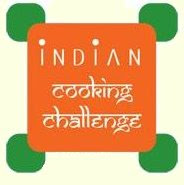One of the best recipes to try for newbies is this Bisi Bele Bhat.
Quinoa 1 1/2 Cups
Green Chillies 3-4 (or as per taste)
Turmeric 1/4 tsp
Sugar/Jaggery 1 Tbsp (optional)
Salt as per taste
Bisibele Bath Powder as given below
Dhania/Coriander seeds 2 tsp
Methi seeds / Fenugreek seeds 3/4 tsp
Coconut Powder 4 tsp
Red chilli 3-4
Urad Dal 2 tsp
Chana Dal 2 tsp
Lavang/Cloves 3-4
Jeera/Cumin seeds 1 tsp
Cinnamon 1 inch piece
Rathi Puvvu about 1 Tbsp
In a sauce pan add oil/ghee and the rest of the seasoning. After the dals are brown enough and the mustard seeds crackle, add the cooked quinoa mixture.
To the above mixture add the tamarind extract, Sugar and the Bisi Bele Bhat Masala Powder and let the flavors mix well.
Serve this one-pot meal with some Papads and curds.
Serves 9-10 Adults
Our Best Navratri Wishes to one and all. I was a little confused about the name of this festival. Some refer to it as Navratri and some others as Dasara. So I dug up some interesting info on the background of this festival and wanted to share some details here.
Navratri and Vijayadashami are associated with two symbolic traditions; the ancient worship of Goddess Durga and the much later mythology of Lord Rama victory over Ravana on VijayaDasami Day. Each region of India celebrate Dasara differently based on these traditions. The mythological background that forms the context of this festival are related in 'Markandeya Purana' and 'Devi Bhagavata Purana' respectively. So whatever name we use, this festival essentially symbolizes Good winning over Evil.
So each household follows a certain tradition according to what their forefathers deemed good for the family. We celebrate these 9 days with lots of prayers and naivedyam (offerings to God) to The Goddess and VijayaDashami (the 10th day) as the victory of Lord Rama. Also we seek blessings from all the elders in the family. Another tradition is arranging a 'Bommala Koluvu' (Arrangement of dolls/idols) and exchanging the auspicious 'Haldi and kumkum'.
Coming today's recipe.. I prepared Annam Paramannam or Rice pudding as an offering to the Goddess. Elders at home always say that this is the most important payasam liked by The Goddess. To this day, the same payasam is prepared on every Friday (fav day of The Goddess') at my in-laws place. Here is how I prepared.
Rice 1/2 cup
Ghee 1/2 tsp
Pressure cook rice with 1 cup of milk . (This can be done on the stove top also but I prefer the pressure cooking)
Also add the cardamom powder and mix well.
Preparation Time 45 min (incl the pressure cooking time)
Ingredients -
Green Chilies handful (Remove the stem) about 10-12
Method Of Preparation -
In a heated pan, add 1/2 teaspoon of oil and fry the chana dal, urad dal, coriander seeds and fenugreek seeds one after the other. After they turn golden brown and aromatic, remove them onto a plate. Upon cooling, powder them and set aside.
Preparation Time 15 minutes
Makes 1/4 cup
Bendakaya Avapettina Koora
Chow Chow Carrot Kootu
Dangar ~ Urad Dal Raitha
Erragadda Karam ~ Onion Chutney
Fatafat ~ Tamarind Candy
Gobbi Koora ~ Mixed Vegetable Curry
Horsegram Rasam (Ver 2) ~ Ulavacharu
Irani Samosas
Jonna Pindi Idli ~ Jowar Flour Idli
Kothimeera Podi ~ Cilantro Powder
Laskora Boorelu ~ Coconut Dumplings
Munagaku Podi ~ Drumstick Leaves Powder
Nuvvula Karam Podi ~ Sesame Powder
Oats Kobbari Lauzu ~ Oats Coconut Laddu
Pulihora With Readymade Mix
Qubooli Biryani
Ragi Muddhalu
Siriyali ~ Moong Idli Bites in Tangy Sauce
Tamata Ukkera ~ Tomato Curry with Sesame Seeds
Uggani ~ Puffed Rice Street Food
Vankaya Ninchudukaya
Method Of Preparation -
In a heated pan, add a tablespoon of oil and fry the vadi/vadiyalu until they are golden brown.
Check out the Blogging Marathon page for the other Blogging Marathoners doing this BM#117
Preparation Time 25 minutes
Serves 5-6
Preparation Time 30 minutes
Makes 8
Ingredients -
Lauki / Bottle Gourd peeled and grated 3 cups
Ghee 1-2 tsp
Milk 1/2 cup
Sugar 1/4 cup + 1 Tbsp (Adjust as needed)
Almond Flour 2 Tbsp
Milk Powder 1/2 cup
Roasted Cashews chopped 2 Tbsp + more for garnish
Cardamom Powder 1/2 tsp
Method Of Preparation -
In a non-stick pan, add ghee and saute the grated bottle gourd. After about 10 minutes, the bottle gourd would have cooked through.
Add milk, sugar and allow the mixture to come to a rolling boil.
Now is the time to sprinkle some almond flour and milk powder and mix well. Make sure there are no lumps.
Sprinkle some chopped cashews and keep stirring well until the halwa comes together as a single mass.
Remove from heat and serve warm.
Preparation Time 20 minutes
Makes 1.5 cups approximately
Ingredients -
Method Of Preparation -
Preparation Time 25 minutes
Serves 5-6




























